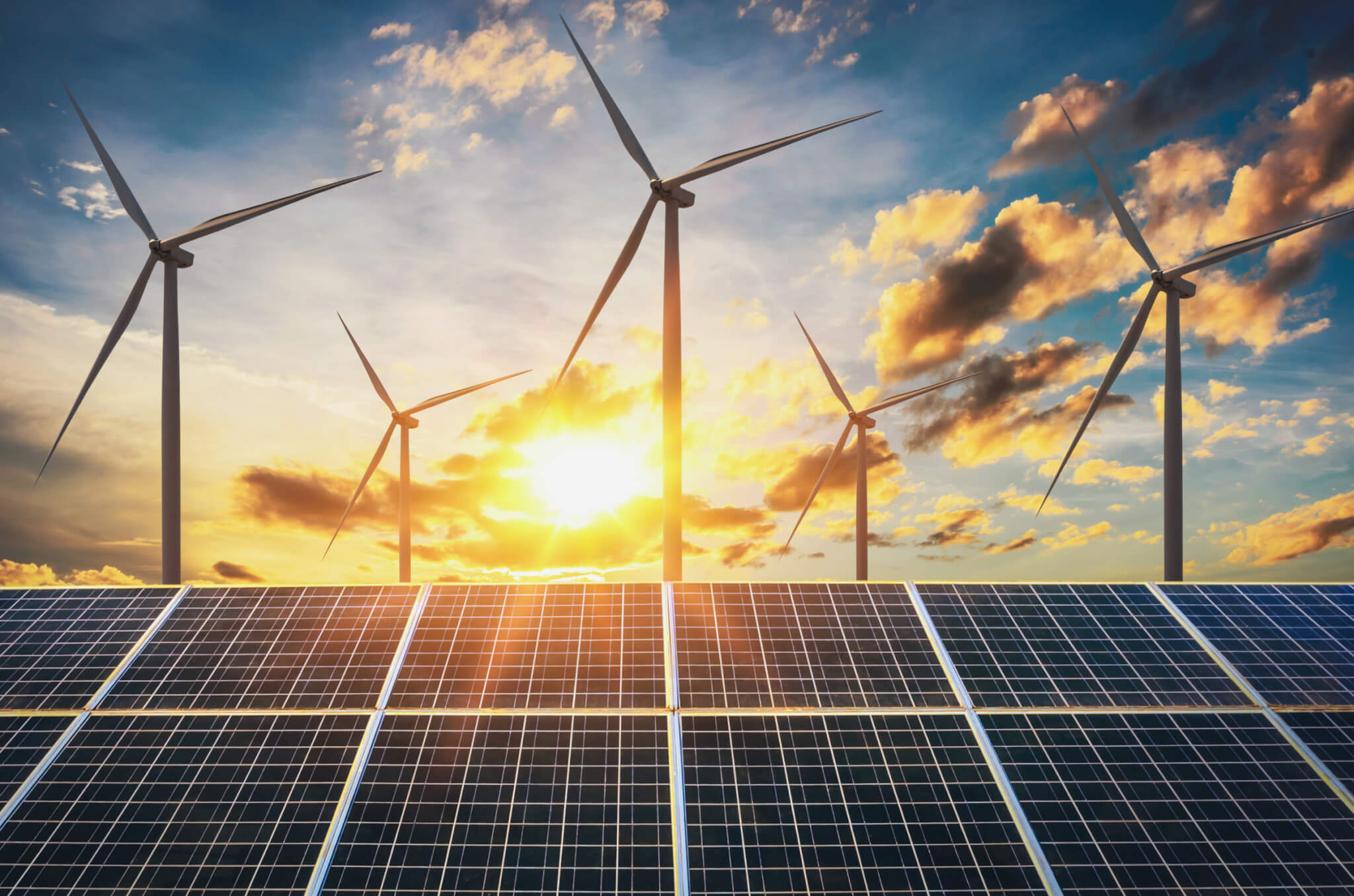Hybrid wind and solar farms are making their way in Lithuania: who are they and what are their advantages?
As the demand for renewable energy grows rapidly and development gains momentum, there is more talk of hybrid wind and solar farms, where several installations of different renewable energy technologies are connected to a single grid connection point. Hybrid parks are increasingly being built in Europe, and are now also being built in Lithuania. When is a park considered a hybrid and what are the advantages of such a park? “Hybrid wind and solar parks are the most appreciated for several reasons. Firstly, they allow to increase the amount of electricity produced. Secondly, they make more efficient use of existing grid infrastructure and capacity. Thirdly, it provides a more even supply of electricity to the grid. Fourthly, it reduces costs for developers and thus the price of electricity for end users,” says Edgaras Maladauskas, Acting Head of the Lithuanian Wind Energy Association (LVEA). Since 2016, when the first hybrid wind and solar park was installed in the UK, hundreds of megawatts (MW) of hybrid parks have been built in Europe. Hybrid parks are usually built by adding new solar power plants and, in some cases, batteries to existing wind farms. The first hybrid park in Lithuania, being developed by Ignitis Renewables, an international green energy company, is expected to be operational by 2024. A 22 MW solar park will be built next to a wind farm in Tauragė district, which has been operating for a decade. “Combining several renewable technologies into a single connection point results in a higher efficiency of the electricity grid due to the non-monotonicity of electricity production of the different technologies: typically, solar power plants produce most of their electricity in spring and summer during the daytime, while wind power plants produce most of their electricity in the autumn and winter, when solar power plants are less productive,” says Giedrius Meškelė, Head of Renewable Energy Lithuania at Ignitis Renewables. According to him, the definition of a hybrid park means that several renewable energy generation or storage facilities, i.e. wind and solar power plants, which can also be combined with electricity storage facilities, i.e. batteries, are connected to a single point of connection in the electricity transmission or distribution grid. “The issue of grid capacity has become particularly relevant recently, when a large number of grid reservations have been made in a relatively short period of time for the development of new wind or solar farms. Meanwhile, hybrid wind and solar farms partly solve this problem by making more efficient use of the available connection to the grid and thus using grid capacity more evenly, as solar and wind farms generate electricity at different times most of the time. In addition, in the rare cases where wind and solar generation coincide and exceed the grid’s capacity, it may be economically viable for developers to add batteries to the hybrid fleet to balance the timing of the electricity being fed into the grid, thus not losing part of the electricity generated and not overloading the grid,” explains G. Meškelė.
It is estimated that the first hybrid park in Lithuania will have enough power to supply around 13,000 households. In his opinion, the combination of wind and solar will not only increase the efficiency of the electricity grid, but also reduce the cost of installing the park compared to installing separate power plants with different technologies. “The investment in a hybrid wind-solar park is lower because it uses part of the same infrastructure and requires less cabling and transformers,” says Ignitis Renewables’ representative. According to Edgars Maladauskas, Acting Director of the LVEA, hybrid wind and solar parks would also help developers to address the current challenges of available land for renewable energy development in the country. “Installing wind and solar farms on one site helps to maximise the use of existing land and grid capacity. Where wind farms are already in operation, we normally have agricultural land, but some of it could certainly be used to install solar plants without taking up additional land,” he says. The LVEA head believes it is important to understand that wind and solar energy cannot be pitted against each other in achieving Lithuania’s renewable energy goals – they are successfully complementary renewable resources. “Hybrid parks will only increase in number as the demand for renewable energy grows exponentially. This is not only due to the geopolitical situation caused by Russia’s war in Ukraine, but also due to the growing consumption of electricity. By implementing as many wind and solar energy projects as possible, we would not only secure energy independence, but also meet our domestic consumption needs and be able to talk about lower electricity prices. The next step would be the export of renewable energy, for which Lithuania also has a lot of potential,” said Mr Maladauskas.
Post a comment
You must be logged in to post a comment.


